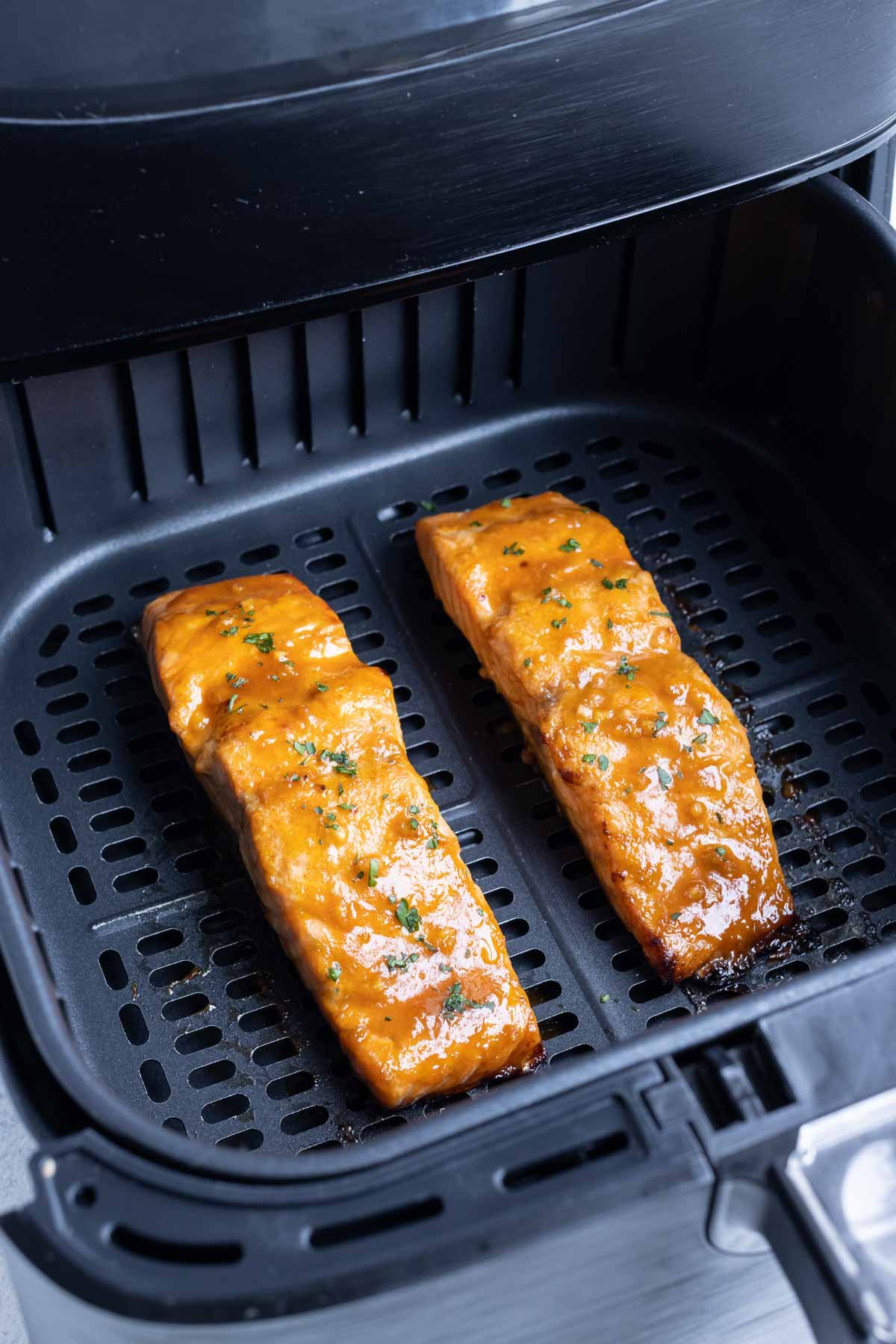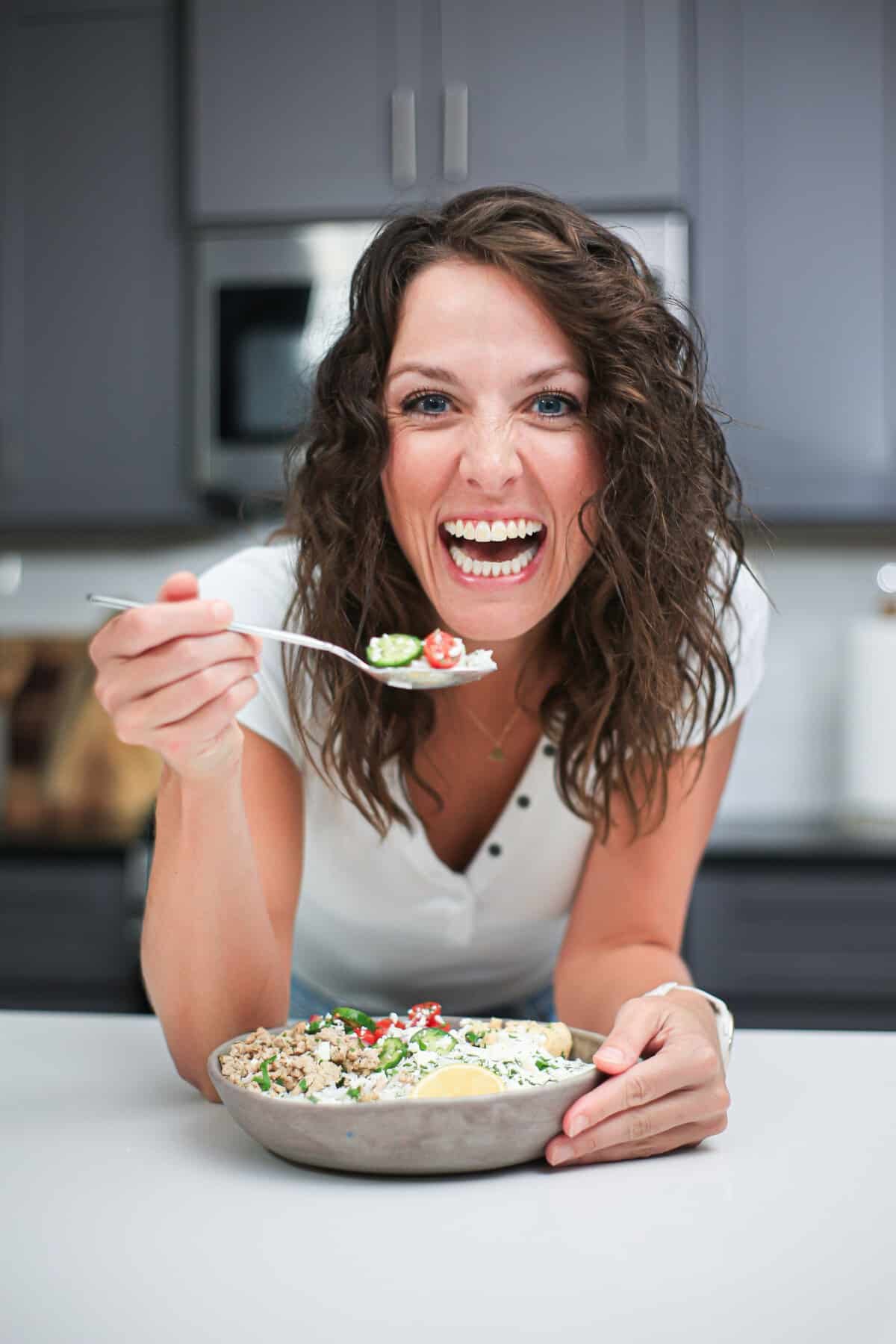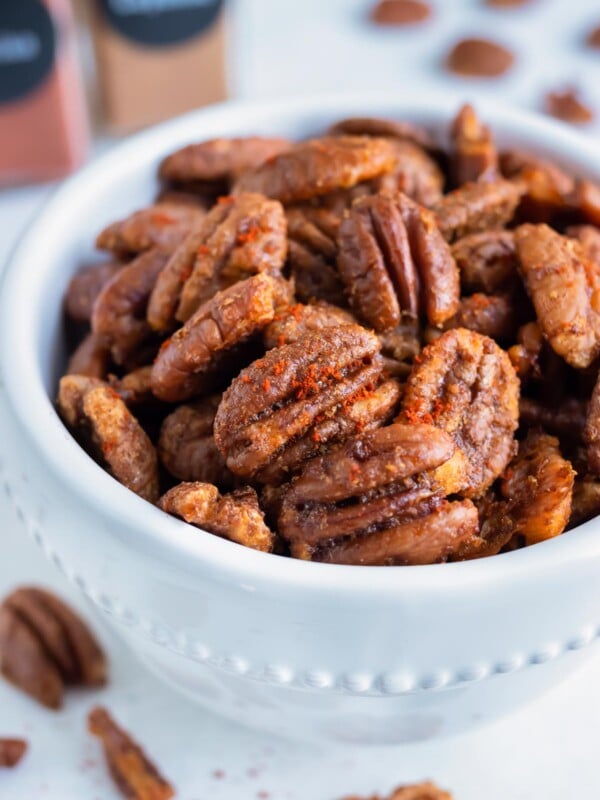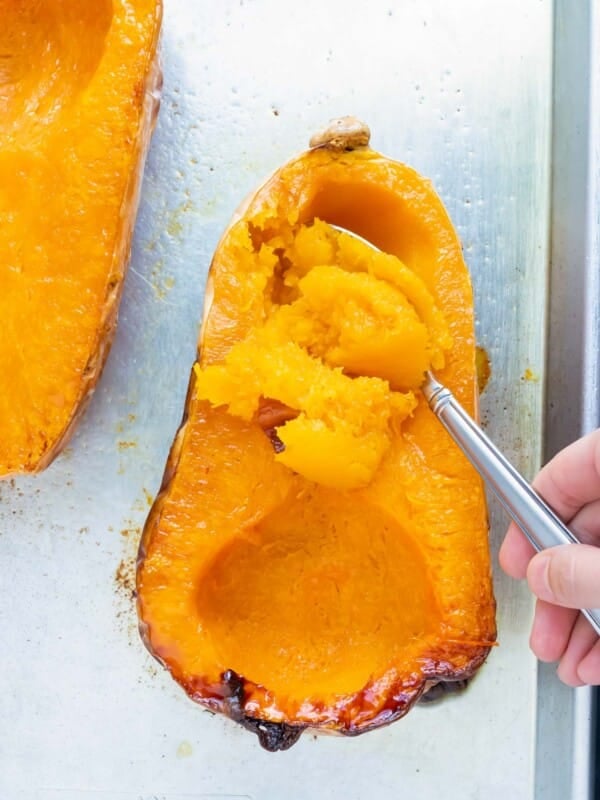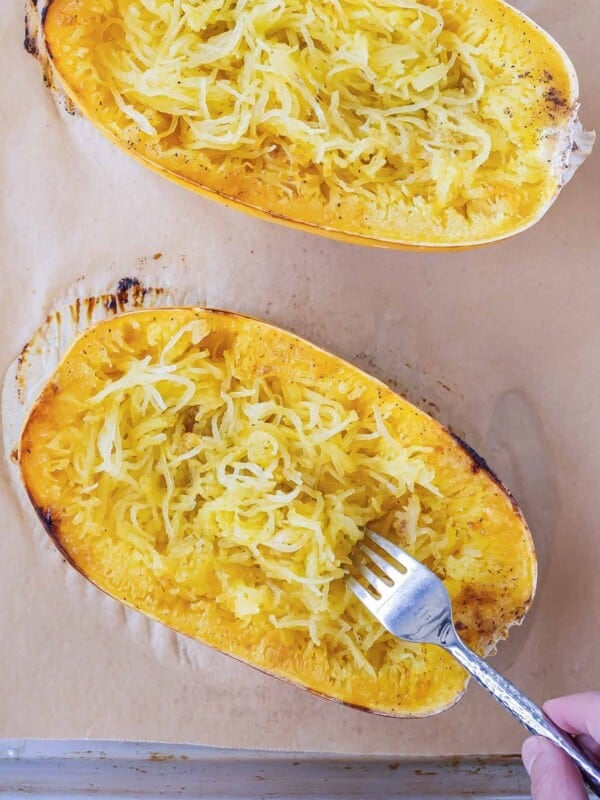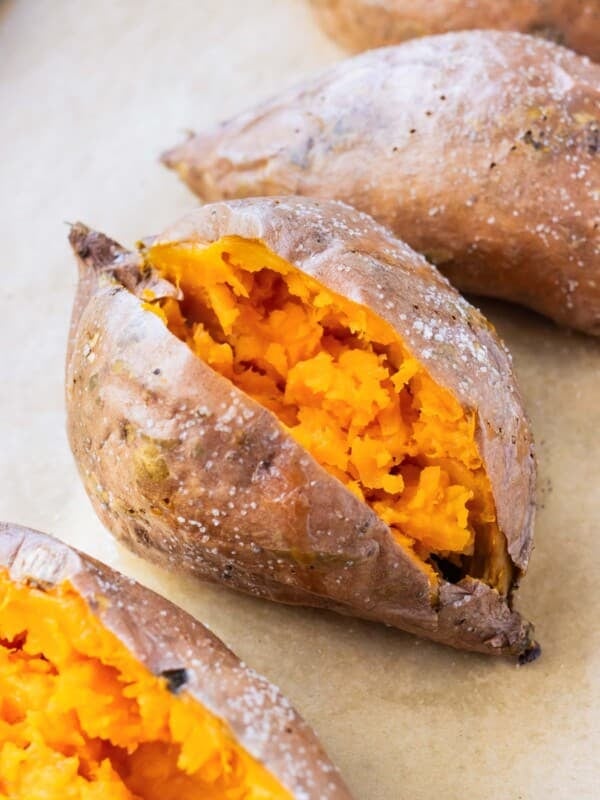What temperature is salmon done and why does the internal temperature of salmon matter? Let’s briefly talk about salmon’s health benefits, the best way for cooking salmon, and when your salmon reaches the right temperature. With these methods, a meat thermometer, and the recipes at the end of the post, you’ll be cooking salmon perfectly in no time!
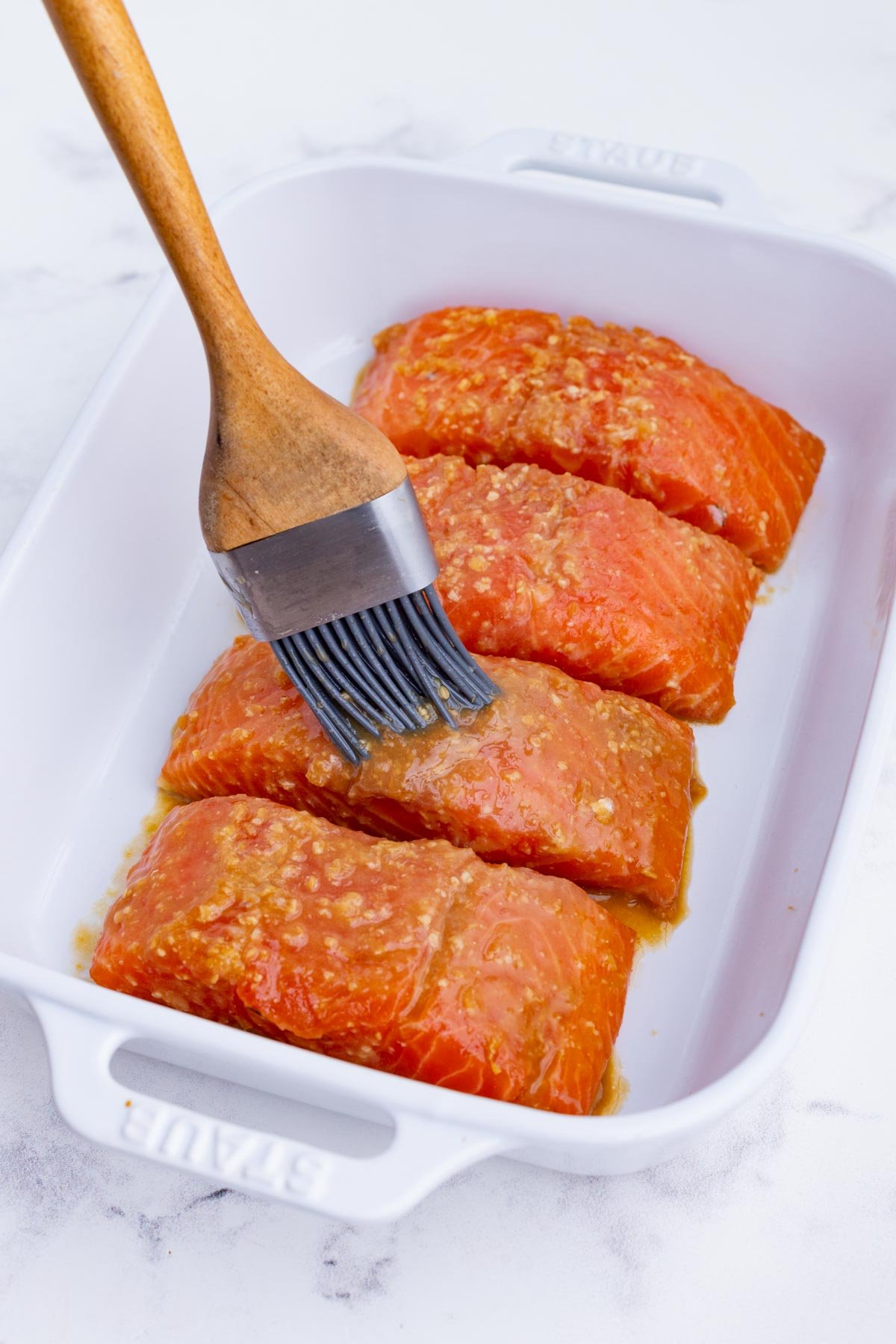
Salmon Health Benefits
Learning about salmon is a great way to motivate yourself to incorporate it more frequently in your diet. Salmon is low in fat, and high in protein. It has ample omega-3s that are essential for brain function. Some of salmon’s nutrients include:
- Potassium
- Vitamin D
- Vitamin B12
- Iron
Because salmon is so easy to cook and make your own, it’s that much easier to eat the 8 ounces per week the FDA recommends.
What is the proper temperature for salmon?
When the thickest part of the salmon reaches an internal temperature of 145°F, it’s considered safe to eat according to the FDA. It’ll be firm and the salmon will have a flakey texture.
The best way to reach a silky, yet cooked salmon is by taking the salmon off the heat at 135°F, letting it rest, then eating it. Resting will allow the salmon to continue the cooking process without direct heat, creating a moist and safe-to-eat fish.
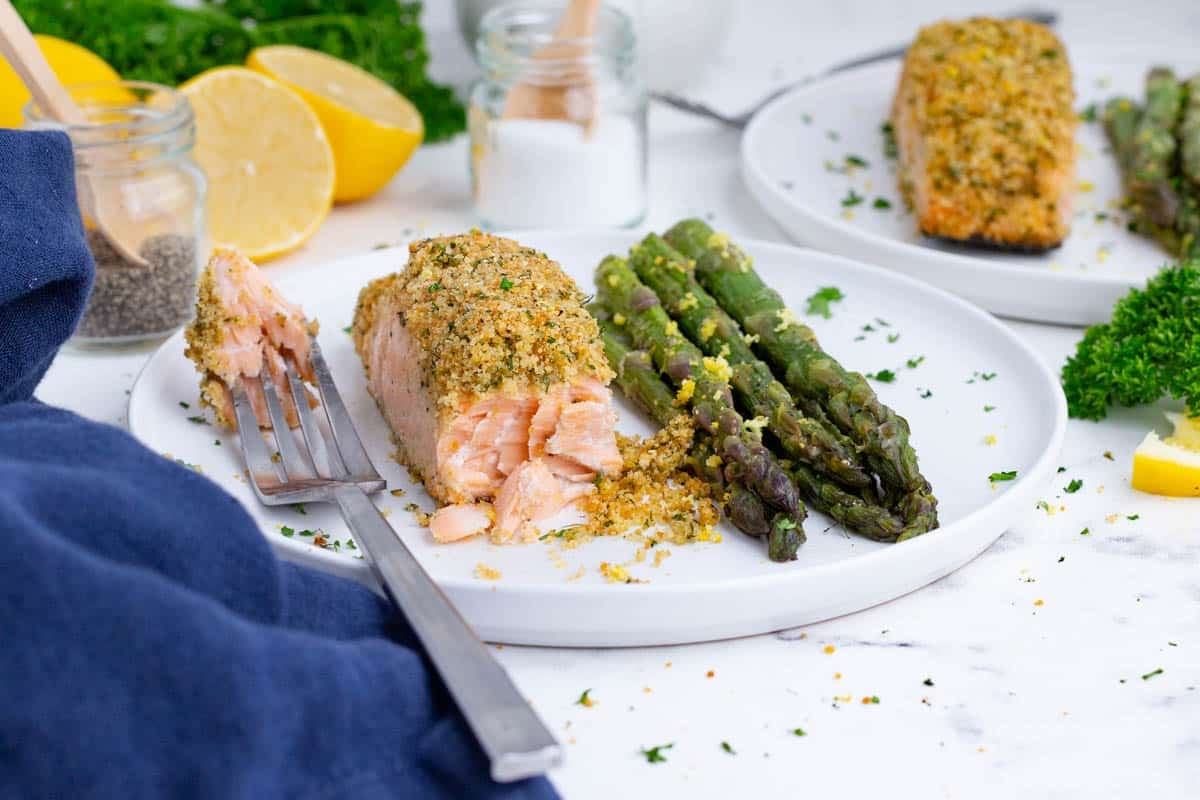
Salmon Temperature by Doneness
If you want to know how to exactly reach a certain salmon doneness, you’ll want to use a meat thermometer to check the internal temperatures.
| Rare Salmon | < 120°F |
| Medium-Rare Salmon | 125°F – 130°F |
| Medium Salmon | 135°F – 140°F |
| Well-Done Salmon | >145°F |
How to know when salmon is done?
The best way to know when salmon is done is to use an instant-read thermometer. You will never have to guess the correct temperature or cut into your fish when using this kitchen gadget. Check out my favorite thermometer that’s less than $20.
Once you have that meat thermometer, you’ll insert it in the thickest part of the salmon. In a matter of seconds, you’ll get an accurate temperature. Be sure that the tip of the thermometer is not touching the pan, or you will get an inaccurate read.
In case you don’t have a food thermometer on hand, the poke test will do the trick. All you do is gently press down on your salmon and feel for the connective tissue to easily separate, or flake. And just like any other meat, there shouldn’t be a pink color in the flesh of the fish.
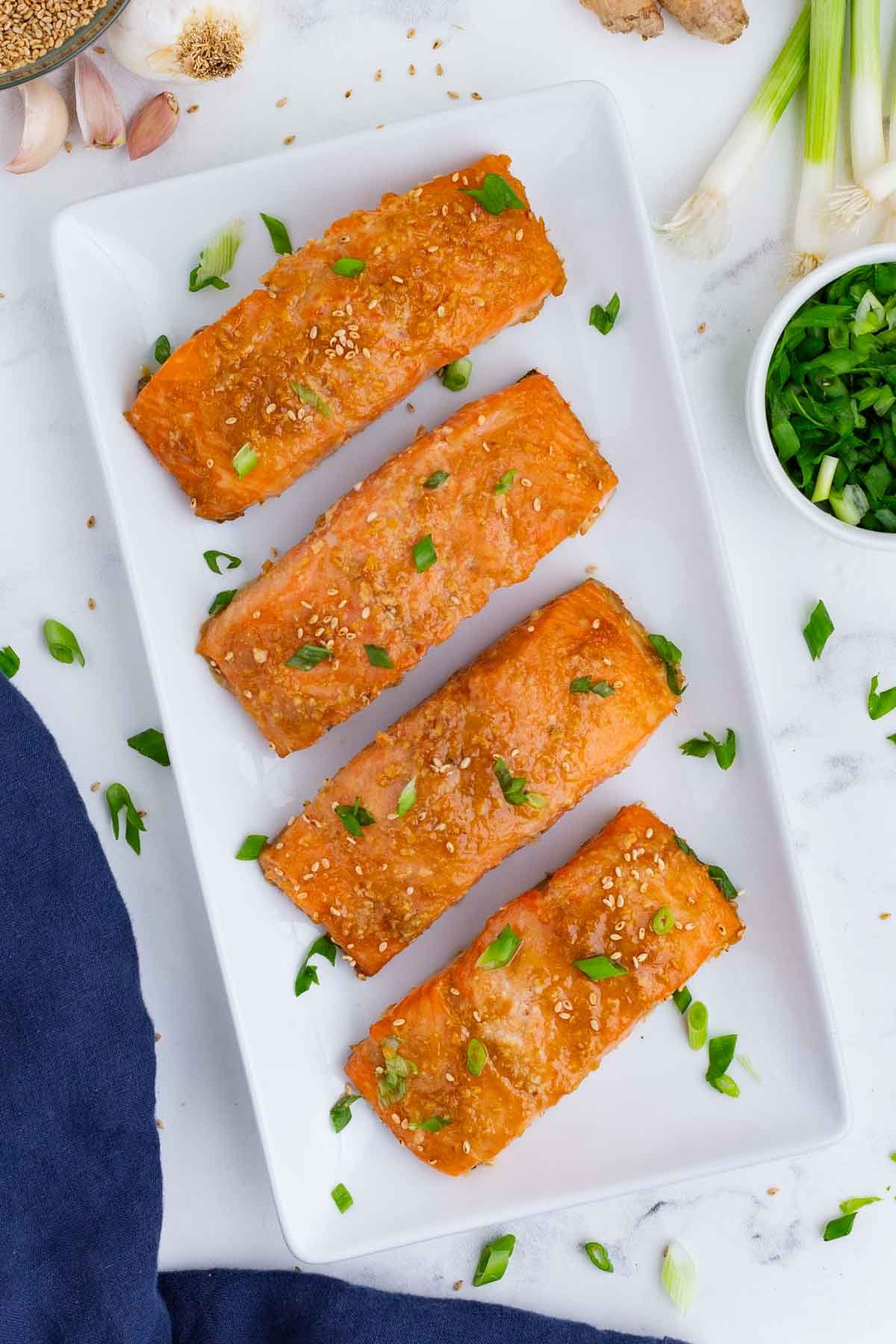
Salmon Oven Temperatures & Times
There are many factors that go into how long to cook fish and at what cooking temperatures, so here are things to consider when you’re making salmon for your next meal:
- Thickness
- Wild salmon or farm-raised salmon
- Large portion or individual salmon fillets
Obviously thinner salmon cooks faster than thicker fillets, and wild salmon cooks more quickly than farm-raised salmon, due to the higher fat in farm-raised. Always check a few minutes early, so your salmon doesn’t turn dry!
Pro Tip: Generally speaking, a 1-inch thick piece of salmon takes 12-14 minutes of baking time at 425°. If your salmon is not as thick as that, know that every half inch of salmon takes 4-6 minutes to cook through.
Here’s the ultimate guide for the times and temperatures:
| 350°F | 15-18 minutes |
| 375°F | 12-16 minutes |
| 400°F | 11-14 minutes |
| 425°F | 9-12 minutes |
| 450°F | 8-10 minutes |
The Best Salmon Cooking Methods
There are many different ways to cook fish, from higher temperatures to a lower temperature and skin or no skin, just to name a few. Here are 4 methods that can help you determine how you’ll want to cook your salmon.
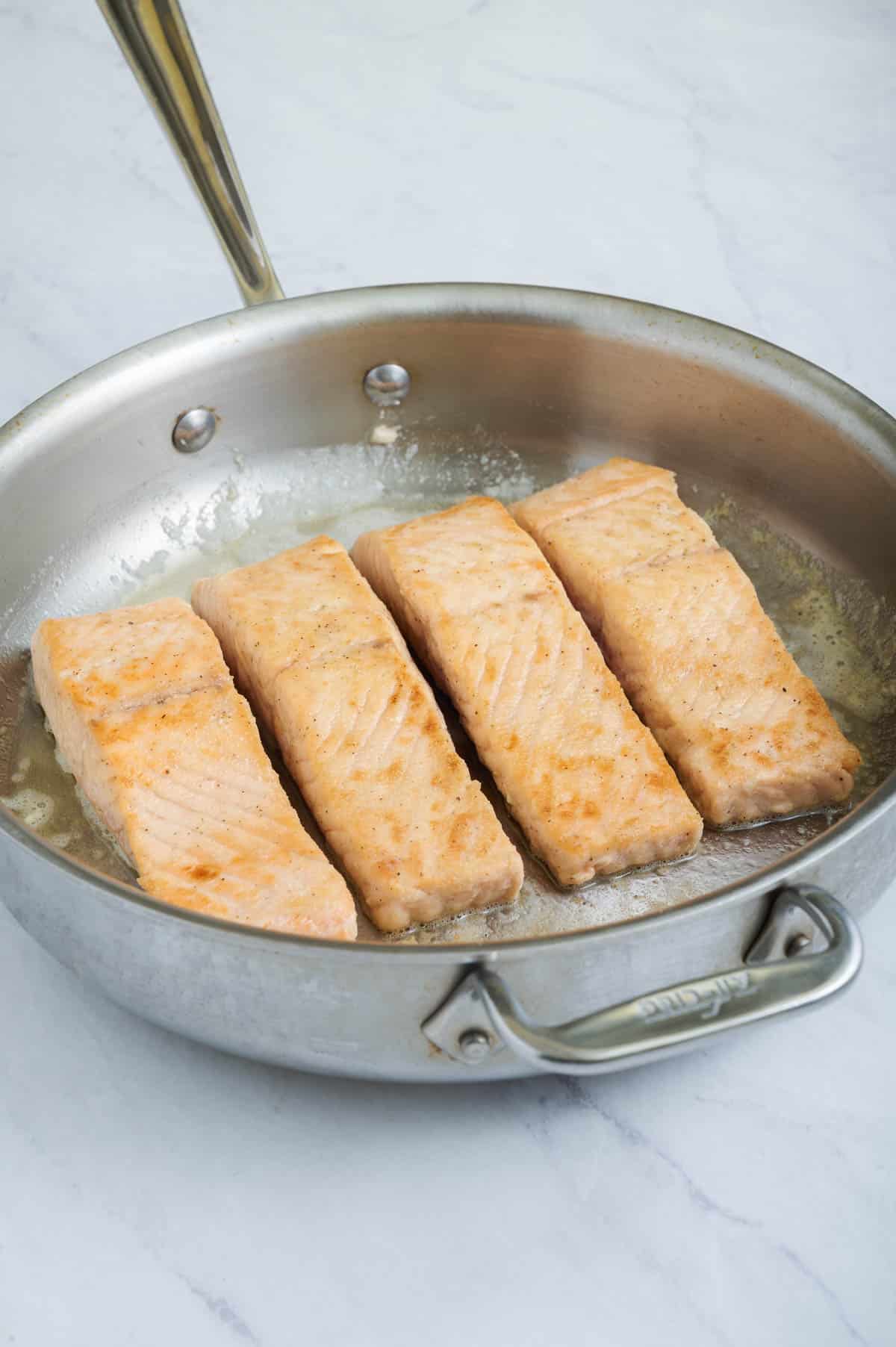
How to Pan-Fry Salmon
Pan-frying is for individual fillets and salmon steaks.
- Pat your salmon dry.
- Score the salmon skin (if still on), so it doesn’t contract while cooking.
- Preheat a non-stick pan or cast-iron skillet to a medium-high/high heat.
- Add a high heat oil like avocado oil to the pan.
- Place fish in the pan, skin side down first.
- When the skin loosens easily from the bottom of the pan, flip once and check the internal temperature before taking off the heat.
How to Steam Salmon
Steaming is for individual fillets.
- Preheat oven to 400°F.
- Score the salmon skin (if applicable).
- Using parchment paper, enclose your salmon and vegetables inside a parchment paper or foil packet, seal it off but not too tightly.
- Bake until it reaches your desired internal temperature—anywhere from 10-30 minutes.
- Let the salmon rest for 5 minutes.
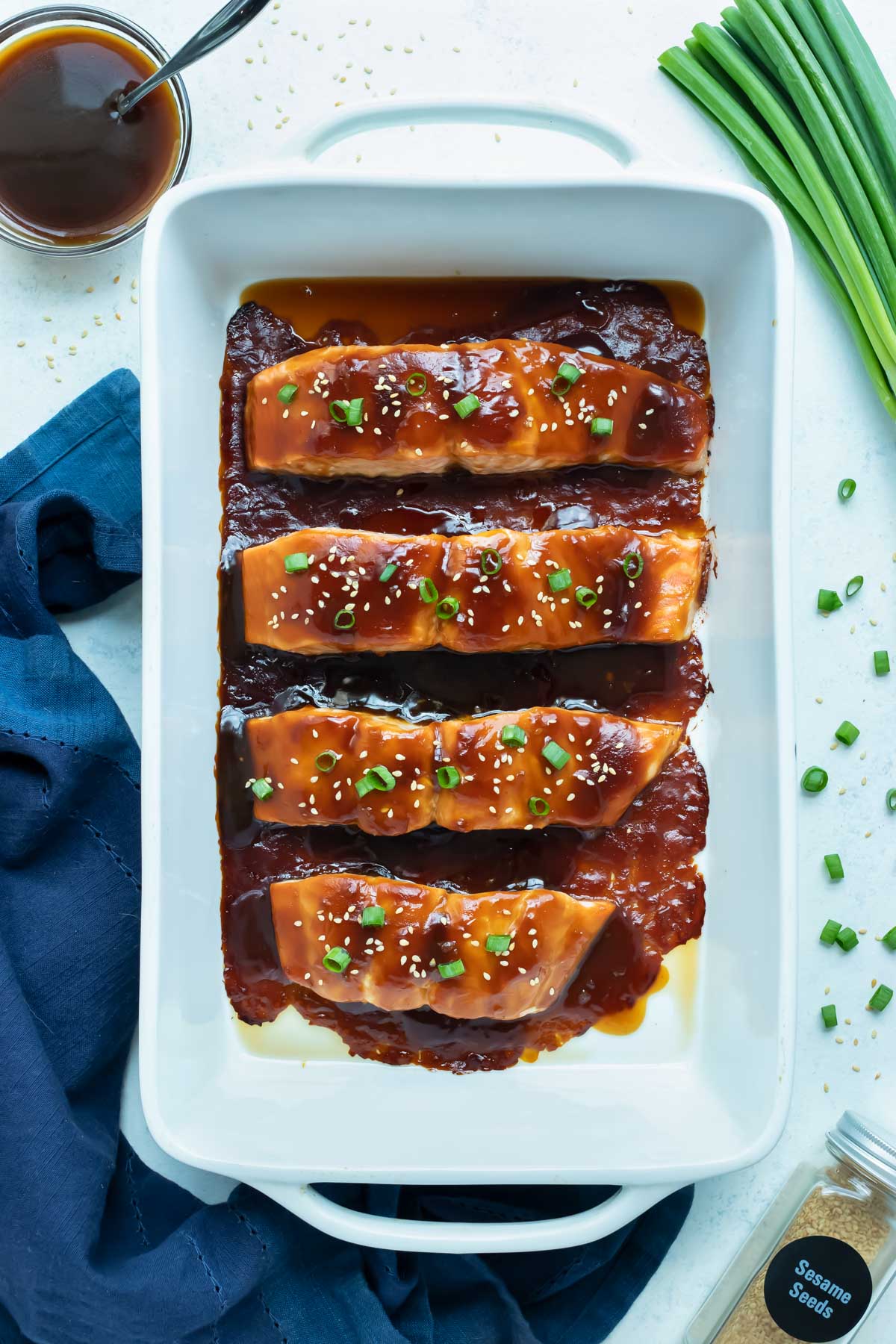
How to Bake Salmon
Baking is for all cuts of salmon. A slow roast is always recommended because it provides an even cook and color to your salmon.
| Oven Temp | Time |
| 250°F | 25-30 minutes |
| 300°F | 20-25 minutes |
| 350°F | 15-20 minutes |
| 400°F | 10-15 minutes |
| 450°F | 8-12 minutes |
- Preheat oven.
- Score the skin of the salmon.
- Place the salmon on parchment paper on a baking sheet.
- Brush the salon with desired sauces and seasonings.
- Roast until it reaches your preferred internal temperature.
- Let rest for 5 minutes before digging in.
How to Air Fry Salmon
The air fryer way is one of the best ways because, unlike using an oven, you don’t have to heat up your whole kitchen, it takes less time, and you get crispy skin no matter what! Individual fillets are the best way to go here, and you can even fit more than one, depending on how big your air fryer basket is.
- Preheat air fryer to 400°F.
- Spray the basket with non-stick cooking spray and place the salmon fillets skin-side down inside.
- Let cook for 10 minutes, but check at 8 minutes for your desired doneness.
- Check out this Air Fryer Salmon Recipe for detailed instructions on the perfect mustard glaze.
Salmon FAQs
Place individual salmon fillets in a baking dish, cover with aluminum foil, bake at 425°F covered for 15 minutes, and then 8-10 minutes uncovered.
